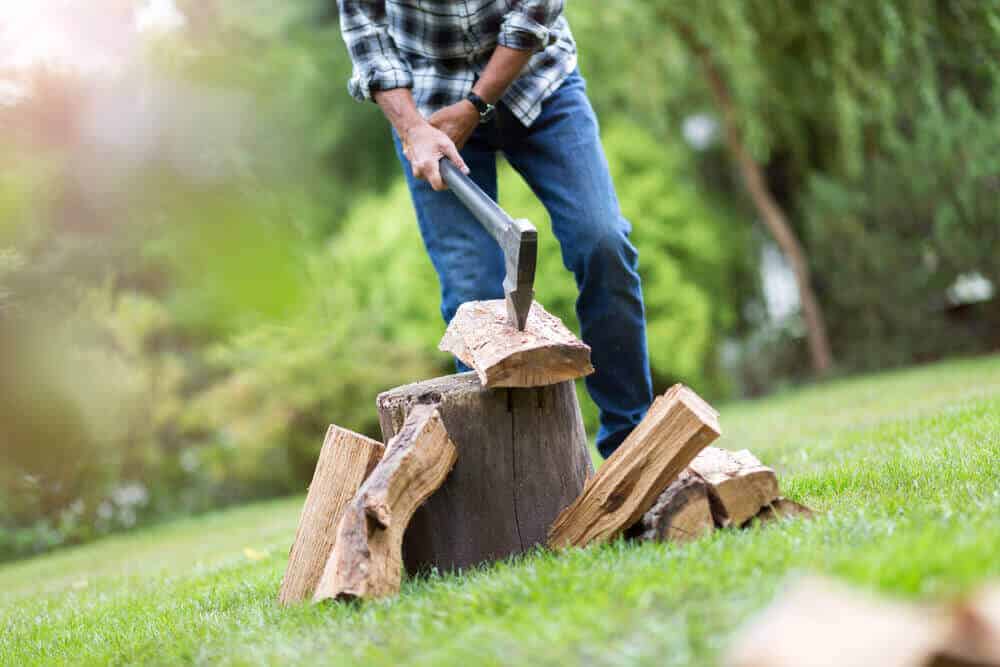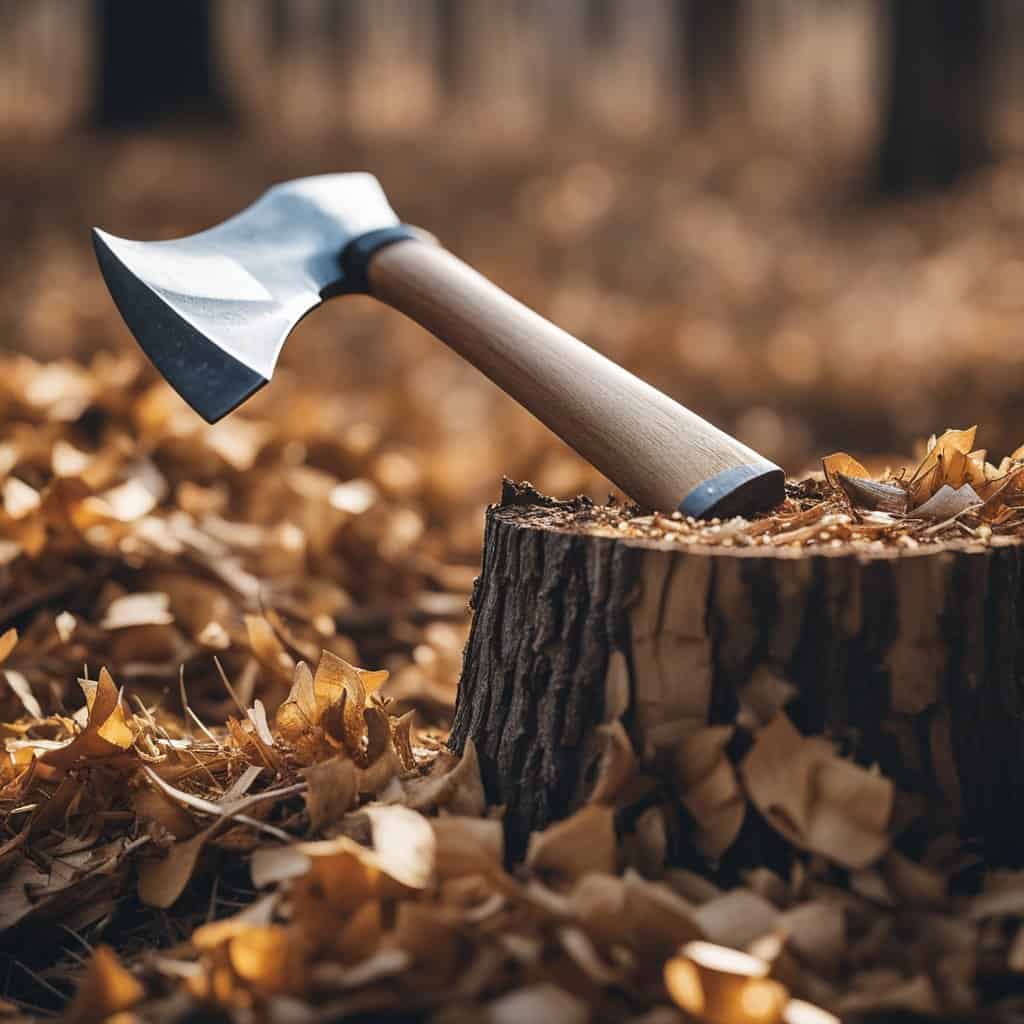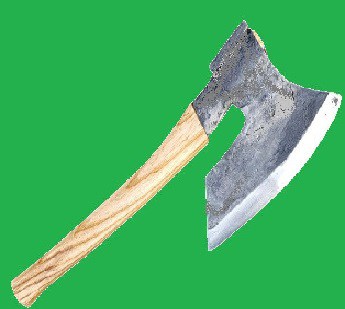Chopping wood has long been a practical necessity for many who rely on wood for heating and cooking. However, it’s not just a functional task; wood chopping can also be an effective workout that engages multiple muscle groups. Many believe that wood chopping targets the arms, but it’s a whole body exercise that incorporates numerous elements, such as strength, speed, and balance.
Table of Contents
Benefits of Chopping Wood as a Workout
According to BarBend, wood chopping doesn’t fit neatly into any category, as it combines full-body, HIIT, strength, speed, compound, core, and balance exercises. This unconventional workout can help improve muscular strength and cardiovascular endurance when performed consistently over extended periods. Whether you’re looking for a new challenge or simply want to incorporate an eco friendly and rewarding exercise into your routine, chopping wood might be the perfect workout.
Strength Building – Chopping wood is an effective way to build strength in various muscle groups. This activity targets the arms, shoulders, back, and core. The explosive, repetitive motion helps improve muscle power and endurance when performed regularly.
Cardiovascular Benefits – Aside from building strength, chopping wood can also improve cardiovascular endurance. When performed steadily for long stretches, the heart rate is elevated and provides an excellent aerobic workout, which, in turn, can help improve heart health and overall fitness levels.
Full Body Engagement – Wood chopping involves several muscle groups and joints, making it a full body workout. It incorporates the core, legs, and upper body muscles while improving balance, coordination, and flexibility. Try incorporating proper form, varying techniques, and intensity when chopping wood for maximum benefits, as this will ensure that you engage various muscles and avoid potential injuries.
Comparing Chopping Wood to Other Workouts
Traditional Gym Exercises
Chopping wood can be considered a full-body workout, engaging multiple muscle groups and providing cardio benefits. In comparison, traditional gym exercises like weightlifting or machine based workouts often target specific muscle groups. For example, bench presses focus primarily on the chest and triceps, whereas squats target the legs and lower body.
On the other hand, chopping wood requires the use of the arms, back, legs, and core muscles, offering a more comprehensive workout. As for calories burned, the exact number will depend on factors such as the individual’s weight, intensity, and duration of exercise. However, it’s important to note that chopping wood can be a calorie torching workout when performed correctly and consistently.
In terms of caloric expenditure, chopping wood may burn up to 400-500 calories per hour, but this number dramatically depends on the individual’s body weight, size, and effort. The calorie burn generally falls within a similar range compared to other cardio workouts like running, cycling, or swimming.
Outdoor Activities
Popular outdoor leisure activities such as hiking, skiing, or snowboarding can offer full body workouts and share a similar calorie burn rate as chopping wood.
While these activities may not provide the same practical benefits as chopping wood, such as producing firewood, they contribute to mental well being by reducing stress.
Ultimately, chopping wood is a unique workout that combines the advantages of traditional gym exercises and outdoor activities. As with any exercise, individual preferences, goals, and fitness levels should be considered when choosing the most suitable workout routine.
Techniques and Safety
You can turn wood chopping into a safe and effective workout by following proper techniques, using the right equipment, and adhering to safety precautions.
Proper Form
Chopping wood effectively requires a proper form that engages the upper body muscles and core while protecting the back and joints. To achieve this:
- Place your feet shoulder width apart and knees slightly bent.
- Hold the axe with both hands, with one hand near the base of the axe and the other grasping the handle closer to the blade.
- Bring the axe overhead while fully extending your arms, then use your core and back muscles to generate power as you swing the axe downward.
- Guide the axe head into the wood with control, avoiding a forceful impact that could damage your wrists or back.
Equipment
Having the right equipment is essential for safety and efficiency, including:
- A sharp, high quality axe that is well balanced and suitable for your size and strength
- Wood chopping block or log-splitting platform to make it easier and safer to chop wood
- Comfortable, appropriate clothing that allows freedom of movement and protects against cuts and scrapes
Safety Precautions
Wood chopping can be dangerous if not done carefully. To minimize the risk of injuries, follow these safety precautions:
- Ensure the chopping area is clear of obstructions and has a flat, stable surface.
- Wear safety gear, including gloves, goggles, and a face mask.
- Check your axe regularly for signs of wear or damage, and sharpen the blade as needed.
- Never chop wood when fatigued; this can increase the risk of injury.
FINAL THOUGHTS
Chopping wood can be considered a good workout due to its combination of strength, speed, agility, flexibility, and core strength elements. As a workout, it shares similarities with high-intensity interval training (HIIT) and can help burn calories while functionally building muscle.
FREQUENTLY ASKED QUESTIONS
What muscles are used when chopping wood, and how does it benefit overall fitness?
Chopping wood primarily engages the upper body’s muscles, including the arms, shoulders, chest, and back. It also activates the core muscles, including the abs and obliques, which help to stabilize the body during the chopping motion. Overall, chopping wood can improve strength, endurance, and overall fitness.
Is chopping wood a low impact exercise suitable for people with joint pain or injuries?
Chopping wood is not a low impact exercise and can be hard on the joints, especially if done improperly. However, it can be modified to reduce the impact on the joints by using a lighter axe or chopping smaller logs.
How does the cardiovascular workout from chopping wood compare to running or cycling?
Chopping wood provides a moderate cardiovascular workout but is less effective than running or cycling for improving cardiovascular fitness. However, it can be a good alternative for people who prefer outdoor activities or want to add variety to their workout routine.






